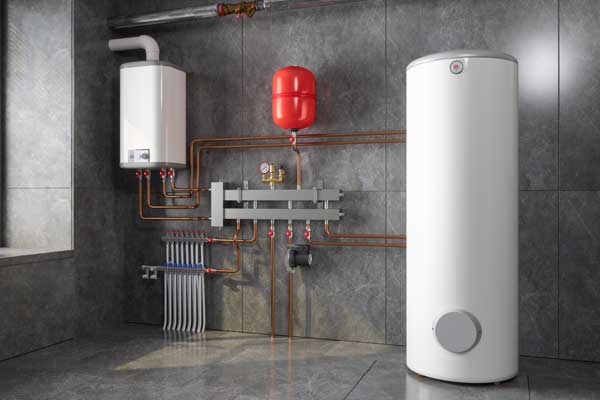Caring for Your Home's Hot Water System: Important Guidelines
Caring for Your Home's Hot Water System: Important Guidelines
Blog Article
We've encountered the article on Water Heater Maintenance Tips You Can't Afford to Forget below on the internet and accepted it made good sense to quickly share it with you on this site.

Hot water is crucial for daily convenience, whether it's for a refreshing shower or cleaning recipes. To guarantee your hot water system runs effectively and lasts much longer, regular upkeep is vital. This short article gives sensible ideas and insights on exactly how to keep your home's hot water system to prevent disturbances and costly repairs.
Intro
Keeping your home's hot water system may appear challenging, however with a couple of basic actions, you can ensure it operates smoothly for several years to come. This guide covers every little thing from understanding your hot water system to do it yourself upkeep tips and understanding when to employ specialist assistance.
Relevance of Maintaining Your Hot Water System
Routine upkeep not just extends the life expectancy of your warm water system but also ensures it runs successfully. Disregarding maintenance can lead to reduced performance, higher energy costs, and also early failing of the system.
Signs Your Warm Water System Demands Upkeep
Recognizing when your warm water system requires focus can protect against significant issues. Look out for signs such as inconsistent water temperature, strange sounds from the heating system, or corroded water.
Flushing the Water Heater
Purging your hot water heater gets rid of debris build-up, boosting performance and lengthening its life.
Monitoring and Changing Anode Rods
Anode poles stop rust inside the storage tank. Inspecting and replacing them when worn is important.
Complicated Problems Requiring Professional Aid
Examples consist of major leakages, electric issues, or if your hot water heater is regularly underperforming.
Routine Professional Maintenance Benefits
Specialist maintenance can include complete assessments, tune-ups, and guaranteeing compliance with safety criteria.
Checking and Adjusting Temperature Level Settings
Adjusting the temperature level settings ensures optimum efficiency and safety.
Do It Yourself Tips for Maintenance
You can perform a number of maintenance jobs on your own to keep your warm water system in leading condition.
Checking for Leaks
Routinely examine pipelines and links for leakages, as these can bring about water damages and greater expenses.
Recognizing Your Warm Water System
Prior to diving right into maintenance tasks, it's handy to comprehend the fundamental elements of your hot water system. Generally, this includes the water heater itself, pipelines, anode rods, and temperature controls.
Month-to-month Maintenance Tasks
Regular monthly checks can assist capture minor concerns before they intensify.
Testing Stress Alleviation Valves
Testing the stress safety valve ensures it operates correctly and stops too much stress buildup.
Protecting Pipelines
Insulating warm water pipelines decreases warmth loss and can save power.
When to Call a Specialist
While DIY upkeep is beneficial, some problems call for professional proficiency.
Verdict
Regular maintenance of your home's warm water system is crucial for effectiveness, durability, and expense financial savings. By following these suggestions and understanding when to look for specialist help, you can guarantee a reliable supply of hot water without unforeseen interruptions.
How to Maintain an Instant Hot Water Heater
Before tinkering with your hot water heater, make sure that it’s not powered on. You also have to turn off the main circuit breaker and shut off the main gas line to prevent accidents. Also turn off the water valves connected to your unit to prevent water from flowing into and out of the appliance. 2. When you’re done, you have to detach the purge valves’ caps. These look like the letter “T†and are situated on either side of the water valves. Doing so will release any pressure that has accumulated inside the valves while at the same time avoid hot water from shooting out and burning your skin. 3. When the purge valves’ caps are removed, you have to connect your hosing lines to the valves. Your unit should have come with three hoses but if it didn’t, you can purchase these things from any hardware or home repair shops. You can also get them from retail stores that sell water heating systems. Read the user’s manual and follow it to complete this task properly. When the hosing lines are connected, open the purge port’s valves. 4. You should never use harsh chemical cleaners or solutions when cleaning your unit. Make use of white vinegar instead. It should be undiluted and you’ll probably use about 2 gallons. 5. Now flush your water heater. This task should probably take about 40 minutes. We can’t give you specific directions for this because the procedure is carried out depending on the type, model and brand of your heater. With that being said, refer to the user’s manual. 6. When you’re done draining the unit, you have to turn off the purge port valves again. Remove the hosing lines that you earlier installed on each of the water valves. Put the valve caps (purge port) back in their respective places and be very careful so as not to damage the rubber discs that are found inside these caps. 7. Now that everything’s back in place, check your user’s manual again to find out how to reactivate your water heating system. 8. Once it is working, turn one of your hot water faucets on just to let air pass through the heater’s water supply pipes. Leave the tap on until water flows smoothly out of it. https://www.orrplumbing.com/blog/2014/september/how-to-maintain-an-instant-hot-water-heater/

I am just very focused on Tips on Maintaining a Water Heater and I'm hoping you enjoyed reading the new post. Sharing is caring. Who knows, you will be doing someone a favor. Thank you for taking the time to read it.
Call Today Report this page